Feature
How do hybrid cars work?
Your questions on hybrid cars answered. From how they work to how much they really cost to run, learn more about the different types of hybrid and find which one is right for you.
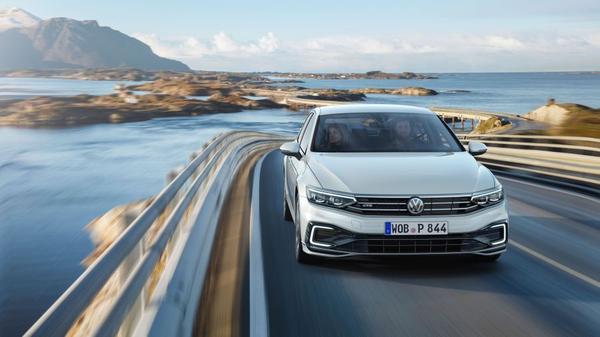

Words by: Andrew Woodhouse

Additional words by: Auto Trader
Last updated on 6 December 2022 | 0 min read
Hybrid cars offer a great step towards clean driving; they have lower emissions, better fuel economy, and none of the range anxiety associated with electric cars. But which is the right hybrid for you?
In this guide, we look at the different types of hybrid on the market today, how they work, how much they cost to own and run and much more. Got a specific question in mind? Jump to: • Types of hybrid • How do hybrids work? • Hybrid batteries explained • Hybrid charging and refuelling • Are hybrid cars expensive? • Hybrid car maintenance • Choosing a hybrid • More FAQs • Hybrid jargon explained
In this guide, we look at the different types of hybrid on the market today, how they work, how much they cost to own and run and much more. Got a specific question in mind? Jump to: • Types of hybrid • How do hybrids work? • Hybrid batteries explained • Hybrid charging and refuelling • Are hybrid cars expensive? • Hybrid car maintenance • Choosing a hybrid • More FAQs • Hybrid jargon explained
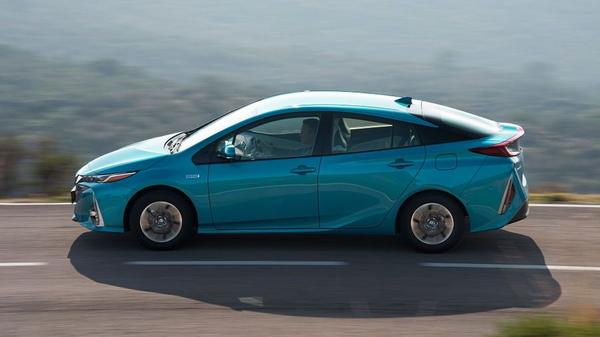
What is a hybrid car?
Hybrid cars, also called HEVs (hybrid electric vehicles), use traditional petrol or diesel ICE engines (internal combustion engines) and electric motors.
The extent to which the hybrid car uses electricity or traditional fuel depends on the type of hybrid.
The extent to which the hybrid car uses electricity or traditional fuel depends on the type of hybrid.
Types of hybrid car
There are three main types of hybrid:
• Mild hybrids (MHEVs) use a more powerful version of a regular car battery and replace the regular alternator with a belt-driven motor/generator delivering a ‘mild’ boost to the ICE engine. • Full hybrids (HEVs) have a bigger battery, a more powerful electric motor and can run purely on electric power for short distances but, more typically, combine both power sources in most situations. Because they can’t be plugged in to charge, they can be referred to as ‘self-charging hybrids’ by some manufacturers. • Plug-in hybrids (or PHEVs) feature a much bigger battery and can be driven on pure electric power without using the internal combustion engine for distances of around 20-30 miles, sometimes more. This is only possible if you plug the car in to charge from an external source, such as a home wallbox or public charging point. If you don’t then the car defaults to operating more like a regular HEV.
• Mild hybrids (MHEVs) use a more powerful version of a regular car battery and replace the regular alternator with a belt-driven motor/generator delivering a ‘mild’ boost to the ICE engine. • Full hybrids (HEVs) have a bigger battery, a more powerful electric motor and can run purely on electric power for short distances but, more typically, combine both power sources in most situations. Because they can’t be plugged in to charge, they can be referred to as ‘self-charging hybrids’ by some manufacturers. • Plug-in hybrids (or PHEVs) feature a much bigger battery and can be driven on pure electric power without using the internal combustion engine for distances of around 20-30 miles, sometimes more. This is only possible if you plug the car in to charge from an external source, such as a home wallbox or public charging point. If you don’t then the car defaults to operating more like a regular HEV.
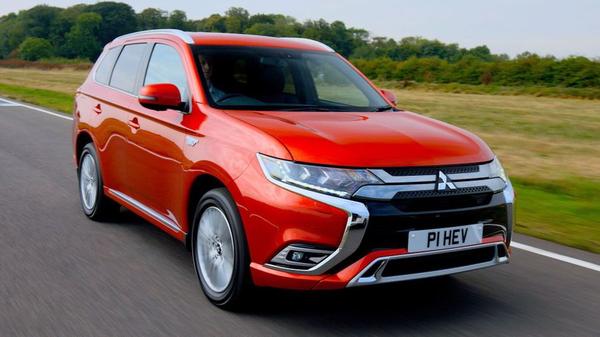
How do hybrid cars work?
Hybrid cars run on an internal combustion engine, as well as one or more electric motors. By combining ICE and electric power, hybrids tend to benefit from increased mileage and reduced fuel consumption.
Hybrid car engines
Usually, the engine of a hybrid car is smaller than the one you’ll find on a conventional car. Smaller engines help in improving the car's efficiency as they are lighter and have fewer cylinders. They also consume lesser fuel to move the internal components.Hybrid car motors
Hybrid cars also use an electric motor to drive the car. Electric motors help accelerate with the help of rechargeable batteries within the car. Some electric motors can also act as a generator to recharge the batteries. If not, hybrid cars are equipped with an electric generator to recharge the battery pack. The size of the engine and the capacity of the electric motor determine how much extra mileage and performance you get on a hybrid car. Hybrid cars are generally considered – and marketed – as more efficient and eco-friendly than petrol or diesel models. They are said to produce lesser tailpipe emissions than regular internal combustion cars. Some manufacturers also use hybrid assistance to improve performance, with less emphasis on efficiency, for example - McLaren Artura, Golf GTE and Cupra Formentor.Are hybrid cars manual or automatic?
Mild hybrids (MHEVs) can work with conventional manual gearboxes and be driven in the conventional way, given they can’t run on pure electric power. However, to realise the full benefits of a mild hybrid system the cars often use ‘coasting’ functions where the internal combustion engine is switched off, such as when you’re going downhill or slowing on the approach to a junction or traffic lights. The real efficiency gains of this can only really be realised if the car has some sort of automatic gearbox, which can put the car into neutral without you having to push the clutch pedal.

Hybrid car batteries explained
Batteries in hybrid cars vary considerably in size and power, according to the type of hybrid system and the balance between electric and internal combustion power the manufacturer wishes to offer the consumer.
Batteries are expensive, too, so this will be a consideration, as will size – for instance some hybrid versions of regular cars lose out on boot space when areas used for storage (typically under the boot floor) are filled with battery packs instead. The batteries in mild hybrids are little larger than the regular ones used by all cars and will usually fit in the engine bay as normal, though they may use a higher 48V electrical system. Those in HEVs may be of nickel-metal hydride or lithium ion design and are typically positioned under the rear seat or beneath the boot floor. In PHEVs the size of the battery dictates the pure-electric range and will be measured in kWh, just like those in pure electric cars. In a mid-sized hatchback or crossover this will typically be in the range of 10kWh for a range of around 30 miles.
Batteries are expensive, too, so this will be a consideration, as will size – for instance some hybrid versions of regular cars lose out on boot space when areas used for storage (typically under the boot floor) are filled with battery packs instead. The batteries in mild hybrids are little larger than the regular ones used by all cars and will usually fit in the engine bay as normal, though they may use a higher 48V electrical system. Those in HEVs may be of nickel-metal hydride or lithium ion design and are typically positioned under the rear seat or beneath the boot floor. In PHEVs the size of the battery dictates the pure-electric range and will be measured in kWh, just like those in pure electric cars. In a mid-sized hatchback or crossover this will typically be in the range of 10kWh for a range of around 30 miles.
Can hybrid cars run without electricity?
All cars, hybrid or not, require a battery to start the engine and run lights, wipers and other systems. And, like any car, a hybrid car will not start if the battery is flat. In normal use, however, a hybrid will always be able to run because there’s an internal combustion engine capable of powering the car in the normal way. So, unlike an electric car, so long as you have fuel in the tank there’s no risk of getting stuck if you can’t charge the battery.
Can hybrid cars run without petrol or diesel?
Technically, a plug-In hybrid could run for the extent of its electric range without petrol or diesel in the tank, but the car may not allow you to do this on the basis it’s not designed to run exclusively as an electric vehicle and needs to be able to fire up the internal combustion engine to assist or charge the electric motor.
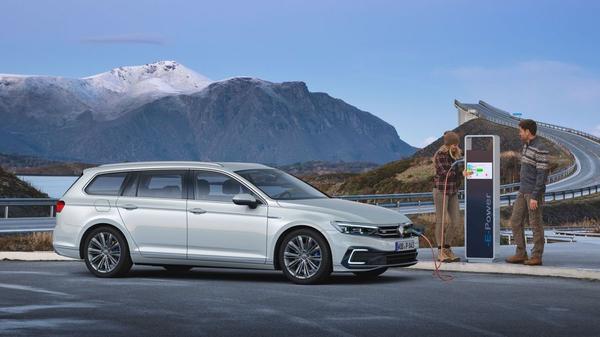
Hybrid charging and refuelling
Are hybrid cars cheaper to fuel?
This depends on the type of hybrid and the way you use it. A mild hybrid may save you a few mpg, especially around town where the improved start-stop system can be a benefit. But it won’t be dramatic.
For ‘full’ hybrids or HEVs the savings can be more significant, assuming you drive it sympathetically and try and maximise the charge in the battery. Used properly you can expect to get, at the very least, diesel fuel consumption from a petrol car. Given petrol is typically cheaper at the pumps than diesel this is attractive, and there are tax benefits for company drivers too. With plug-in hybrids (PHEVs) it is much more dependent on how you drive, and whether or not you choose to charge it up. If you only do short journeys you could conceivably do the daily school run or commute without ever firing up the internal combustion engine. On longer journeys and on motorways PHEVs are less efficient, and often little better on fuel than a regular petrol or diesel car.
For ‘full’ hybrids or HEVs the savings can be more significant, assuming you drive it sympathetically and try and maximise the charge in the battery. Used properly you can expect to get, at the very least, diesel fuel consumption from a petrol car. Given petrol is typically cheaper at the pumps than diesel this is attractive, and there are tax benefits for company drivers too. With plug-in hybrids (PHEVs) it is much more dependent on how you drive, and whether or not you choose to charge it up. If you only do short journeys you could conceivably do the daily school run or commute without ever firing up the internal combustion engine. On longer journeys and on motorways PHEVs are less efficient, and often little better on fuel than a regular petrol or diesel car.
How often do you have to charge a hybrid car?
With mild hybrids and hybrids the car ‘charges itself’ as you drive. With a plug-in or PHEV you can charge it as often (or not) as you want, or are able! If you have a driveway or off-street parking where you can install a home charging point – or can do so at your workplace – and get into the habit of charging every night you will save on petrol or diesel costs. But there’s no need to and the tax and other benefits of owning a PHEV are there whether or not you choose to actually plug it in.
How often do you have to refuel a hybrid car?
Quite simply as and when you need to! Hopefully less often than a regular petrol or diesel car but, just as with a regular car, it’s a good idea to keep some fuel in the tank for longer journeys and avoid getting caught short.
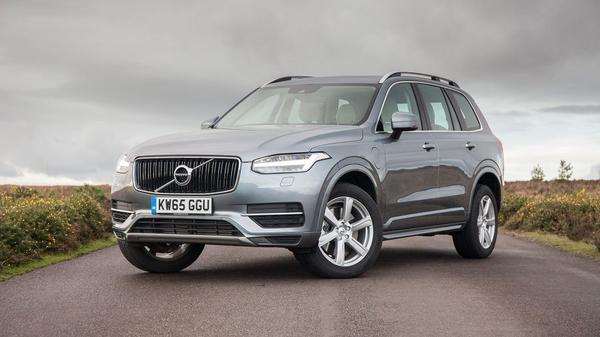
Are hybrid cars more expensive?
Are hybrid cars cheaper than petrol or diesel cars?
Mild hybrids may cost more than equivalent models without this technology but not by much and, as time goes on, the systems are increasingly being fitted as standard to all petrol or diesel powered cars across entire model ranges.
In the case of hybrid cars manufacturers who make a lot of them – such as Toyota – are able to use economies of scale and price them more or less on a par with regular internal combustion powered equivalents. The differences will be more obvious on small hatchbacks and city cars where profit margins are tighter but, from mid-sized cars and upwards, it’s more of a level playing field. Because of their bigger batteries and increased complexity plug-in hybrid models are often considerably more expensive than their internal combustion equivalents, though the difference is mitigated in many cases by only offering them in higher trim levels. For some drivers the huge savings available in tax mean they’ll still be saving significant sums on their monthly costs, even if the PHEV model is more expensive to buy.
In the case of hybrid cars manufacturers who make a lot of them – such as Toyota – are able to use economies of scale and price them more or less on a par with regular internal combustion powered equivalents. The differences will be more obvious on small hatchbacks and city cars where profit margins are tighter but, from mid-sized cars and upwards, it’s more of a level playing field. Because of their bigger batteries and increased complexity plug-in hybrid models are often considerably more expensive than their internal combustion equivalents, though the difference is mitigated in many cases by only offering them in higher trim levels. For some drivers the huge savings available in tax mean they’ll still be saving significant sums on their monthly costs, even if the PHEV model is more expensive to buy.
Are hybrid cars cheaper than electric cars?
Where a manufacturer offers petrol/diesel, hybrid and pure electric versions of the same model the hybrid – even a PHEV – will typically be cheaper than the full EV variant. The difference is more marked on smaller cars like city cars and hatchbacks and narrows on bigger, more expensive or premium models. Where a brand offers a pure electric model as a distinct but comparable alternative to other models in the range the differences are harder to quantify, and some PHEV models can work out as quite expensive to buy.
Are hybrid cars expensive to maintain?
The batteries and motors in hybrid cars don’t require the same level of maintenance as internal combustion engines and, certainly, nothing as hands-on as the basic fluid level checks any owner might carry out on a regular car. Any specific servicing requirements will be included in the schedule laid out by the manufacturer and included in the regular work when you take it to the dealership.
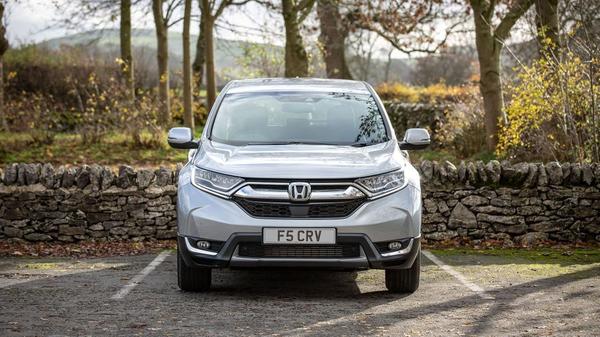
Maintaining a hybrid car
Do hybrid cars need oil changes?
Yes. Any car with an internal combustion engine needs servicing in the usual way, even if it also uses an electric motor. Oil changes, belt replacements, replacement sparkplugs and suchlike will all need to be observed as per the manufacturer’s recommended service intervals.
Do hybrid cars need MoTs and servicing?
Yes. Just like any car hybrids need to have a valid MoT once they are three years old.
Learn more about MOTs in our complete guide.
Learn more about MOTs in our complete guide.
Are hybrid cars expensive to repair?
A mild hybrid shouldn’t cost you any more to maintain than an equivalent non-hybrid petrol or diesel car, given there aren’t really any additional components to worry about. Inevitably the more kit – mechanical, or electronic – there is in a car the more there is to go wrong and the more complicated it is the more expensive it will be to fix. Most hybrids are too new in the market to have picked up any clear trends in terms of reliability or maintenance costs later in life but, in the case of hybrids and plug-in hybrids, you can reasonably expect them to be more expensive to service than conventional petrol or diesel cars.
Are hybrid cars reliable?
Reliability is more down to the individual manufacturers and their wider record, though given the additional complexity of hybrid cars you may want to consider the potential for more things to go wrong. If you’re running a hybrid as a new car within its warranty period this will obviously be less of a worry, and some manufacturers offer additional cover for batteries and other specific hybrid components within their cars. If you’re likely to run the car beyond its warranty period, or are considering older hybrids as a used purchase, it may be something to factor into your number crunching and research, though.
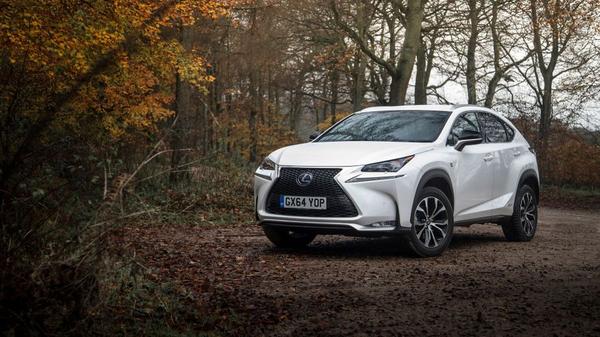
Choosing a hybrid
What are the best hybrids?
The market for hybrids is fast-moving and manufacturers are constantly adding new versions to their ranges, or updating the ones they already offer with bigger batteries, improved range and reduced emissions. Keep an eye on the Auto Trader home page for the latest Expert Reviews and see our regularly updated best hybrid cars round-up for our particular favourites.
Should I buy a hybrid?
There is no one-size-fits all solution and you should carefully consider where and how you drive, how you intend to pay for your car and your personal needs before feeling pressured into buying a hybrid. Current tax rules make them very attractive for company buyers, who could save huge amounts of money in Benefit In Kind by choosing a hybrid version.
For private buyers or those seeking to save on fuel bills the answer is more complicated. In the case of Plug-in Hybrids it takes a level of commitment to charging (and ideally a driveway, garage or off-street parking where you can do so at home) to make the most of them, but for many drivers this is an ideal toe in the water before committing to a full electric vehicle.
For private buyers or those seeking to save on fuel bills the answer is more complicated. In the case of Plug-in Hybrids it takes a level of commitment to charging (and ideally a driveway, garage or off-street parking where you can do so at home) to make the most of them, but for many drivers this is an ideal toe in the water before committing to a full electric vehicle.
Which hybrid is right for me?
Mild hybrids are perfect for people who want the minimum of faff or aren’t especially engaged in what goes on under the bonnet, given they don’t drive any differently from normal cars.
Full hybrids are attractive for those switching from diesel, or who want an all-round car that uses less fuel than a regular petrol model but doesn’t need charging. They are also easy to drive, given you don’t have to fiddle around with different driving modes to make the most of them. Plug-in hybrids are best suited for company drivers looking to save on tax or those whose regular driving is within the all-electric range and can charge it up each night. So, if you have a short commute Monday to Friday but also want a car capable of doing bigger distances than a pure electric car they arguably offer the best of both worlds, especially if you apply yourself and make the effort to understand the different modes and how to drive efficiently by regenerating the battery whenever possible. Just don’t expect huge savings in fuel if you don’t charge it or use it mainly for motorway journeys.
Full hybrids are attractive for those switching from diesel, or who want an all-round car that uses less fuel than a regular petrol model but doesn’t need charging. They are also easy to drive, given you don’t have to fiddle around with different driving modes to make the most of them. Plug-in hybrids are best suited for company drivers looking to save on tax or those whose regular driving is within the all-electric range and can charge it up each night. So, if you have a short commute Monday to Friday but also want a car capable of doing bigger distances than a pure electric car they arguably offer the best of both worlds, especially if you apply yourself and make the effort to understand the different modes and how to drive efficiently by regenerating the battery whenever possible. Just don’t expect huge savings in fuel if you don’t charge it or use it mainly for motorway journeys.

More FAQs
Are hybrid cars good for the environment?
This is a complicated question, and one skewed by the fact drivers are being encouraged through taxation and regulation to buy hybrids on the promise of them being ‘greener’ than regular petrol or diesel cars. Many manufacturers market them as such, too. The reality is more nuanced, and hybrid cynics would point to the fact the batteries, motors and other components use more resources in the manufacturing process. Hybrid cars are also heavier, meaning additional impact through tyres, brakes and other consumable items.
The real-world fuel consumption can also end up being a long way off the impressive stats achieved through official testing, especially in the case of plug-in hybrids if owners don’t charge them or tend to cover a lot of motorway miles. At the level of ‘tailpipe emissions’ and fuel consumption hybrids can, it’s true, offer real benefits, especially in urban areas if they are being driven on pure electric power. As cities look to improve air quality hybrids do have the potential to offer localised benefits, but only if they are bought in significant numbers and used properly by their owners.
The real-world fuel consumption can also end up being a long way off the impressive stats achieved through official testing, especially in the case of plug-in hybrids if owners don’t charge them or tend to cover a lot of motorway miles. At the level of ‘tailpipe emissions’ and fuel consumption hybrids can, it’s true, offer real benefits, especially in urban areas if they are being driven on pure electric power. As cities look to improve air quality hybrids do have the potential to offer localised benefits, but only if they are bought in significant numbers and used properly by their owners.
Are hybrid cars less to tax?
Currently, yes. For the reasons already discussed governments are keen for us to drive hybrids as an ‘easy win’ for reducing emissions, while manufacturers seeking to reduce their average CO2 levels to meet stricter regulations also love hybrids.
Private owners can save on VED (or ‘road tax’ as it’s often known) and some cities incentivise low-emission vehicles, meaning they can be cheaper to drive in city centres that charge on this basis. Company drivers are the real winners, meanwhile, with huge incentives in Benefit In Kind to run Plug-in Hybrid models in particular. Bear in mind, though, this could all change at the stroke of a pen if the mood changes, as it has with diesel cars.
Private owners can save on VED (or ‘road tax’ as it’s often known) and some cities incentivise low-emission vehicles, meaning they can be cheaper to drive in city centres that charge on this basis. Company drivers are the real winners, meanwhile, with huge incentives in Benefit In Kind to run Plug-in Hybrid models in particular. Bear in mind, though, this could all change at the stroke of a pen if the mood changes, as it has with diesel cars.
Abbreviations and jargon
• ICE – Internal Combustion Engine, be that petrol or diesel powered
• MHEV – Mild Hybrid Electric Vehicle • HEV (also known as ‘full hybrid’, ‘self-charging hybrid’ or just ‘hybrid’) – Hybrid Electric Vehicle • PHEV – Plug-in Hybrid Electric Vehicle • Parallel/series hybrids – A parallel hybrid can run on electric or internal combustion power in isolation, or a combination of the two. In a series hybrid only the electric motor (or motors) power the vehicle, while the internal combustion engine generates electricity and/or charges the battery. Most hybrids in the market at the moment are parallel hybrids. • Range-extender hybrids – Essentially an electric vehicle with a small internal combustion engine to generate electricity for journeys beyond the range of the battery: this will likely be a series hybrid where the internal combustion engine does not power the wheels. Currently rare in the market but seemingly on the verge of a comeback. • Belt-driven starter/generator – An electric motor replacing the alternator on conventional petrol or diesel engines, a starter/generator is driven by a belt and operates in much the same way but can also provide an electric boost to the engine under acceleration or to fill in the gaps in the power delivery, increasing low-end response and improving efficiency. It can’t power the car in isolation, but the increased generating capacity can power higher-voltage electric systems found in many more sophisticated modern cars. This is the key element of a mild hybrid system. • Regeneration, or re-gen – The ability to put charge back into the battery while coasting, usually downhill, in stop-start traffic or city driving where there are lots of traffic lights. Most HEVs will do this automatically but some have special gear settings or modes where the regeneration is more aggressive, meaning the car slows dramatically when you lift off the throttle and means you only really need to use the brakes when coming to a complete halt. • Driving modes – Different manufacturers use different terminology but many plug-in hybrids have modes and settings for drivers motivated to explore them. These can include ‘storage’ modes to save the battery charge for a specific part of the journey (say, the final few miles through town), charging modes or a setting to force the car to drive in pure electric.
• MHEV – Mild Hybrid Electric Vehicle • HEV (also known as ‘full hybrid’, ‘self-charging hybrid’ or just ‘hybrid’) – Hybrid Electric Vehicle • PHEV – Plug-in Hybrid Electric Vehicle • Parallel/series hybrids – A parallel hybrid can run on electric or internal combustion power in isolation, or a combination of the two. In a series hybrid only the electric motor (or motors) power the vehicle, while the internal combustion engine generates electricity and/or charges the battery. Most hybrids in the market at the moment are parallel hybrids. • Range-extender hybrids – Essentially an electric vehicle with a small internal combustion engine to generate electricity for journeys beyond the range of the battery: this will likely be a series hybrid where the internal combustion engine does not power the wheels. Currently rare in the market but seemingly on the verge of a comeback. • Belt-driven starter/generator – An electric motor replacing the alternator on conventional petrol or diesel engines, a starter/generator is driven by a belt and operates in much the same way but can also provide an electric boost to the engine under acceleration or to fill in the gaps in the power delivery, increasing low-end response and improving efficiency. It can’t power the car in isolation, but the increased generating capacity can power higher-voltage electric systems found in many more sophisticated modern cars. This is the key element of a mild hybrid system. • Regeneration, or re-gen – The ability to put charge back into the battery while coasting, usually downhill, in stop-start traffic or city driving where there are lots of traffic lights. Most HEVs will do this automatically but some have special gear settings or modes where the regeneration is more aggressive, meaning the car slows dramatically when you lift off the throttle and means you only really need to use the brakes when coming to a complete halt. • Driving modes – Different manufacturers use different terminology but many plug-in hybrids have modes and settings for drivers motivated to explore them. These can include ‘storage’ modes to save the battery charge for a specific part of the journey (say, the final few miles through town), charging modes or a setting to force the car to drive in pure electric.